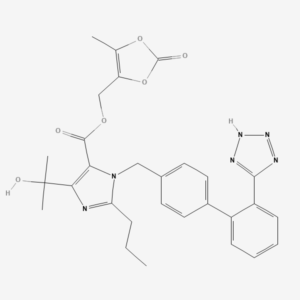Gout is an ancient malady, once referred to as the ‘disease of kings’ due to its association with dietary indulgences. Today, we understand it as a complex form of arthritis resulting from an overabundance of uric acid in the bloodstream. Febuxostat, a contemporary pharmaceutical aid, offers a promising approach to manage this painful condition. In this comprehensive exploration, we delve into the specifics of Febuxostat, its mode of action, therapeutic uses, potential side effects, and vital precautions that need to be heeded.
AN INTRODUCTION TO FEBUXOSTAT
Febuxostat is an oral medication classified as a xanthine oxidase inhibitor. Its primary role is in managing gout, a metabolic disorder typified by the deposition of monosodium urate crystals in tissues, leading to bouts of acute arthritis. By significantly lowering uric acid levels, Febuxostat helps to ameliorate the painful symptoms of gout, such as joint pain, swelling, and inflammation.
THE SCIENCE BEHIND FEBUXOSTAT
Febuxostat functions by inhibiting an enzyme termed xanthine oxidase. This enzyme plays a critical role in purine metabolism, facilitating the conversion of hypoxanthine to xanthine and subsequently, xanthine to uric acid. By blocking xanthine oxidase, Febuxostat impedes this metabolic pathway, thereby reducing the concentration of uric acid in the blood and mitigating the deleterious effects of gout.
THE VERSATILE THERAPEUTIC UTILITY OF FEBUXOSTAT
CHRONIC GOUT MANAGEMENT
The primary application of Febuxostat is in the treatment of chronic gout in adults. By efficaciously lowering the levels of uric acid in the blood, Febuxostat can effectively reduce the frequency and intensity of gout attacks.
HYPERURICEMIA IN TUMOR LYSIS SYNDROME
Another application of Febuxostat lies in the management of hyperuricemia, which occurs as a result of the tumor lysis syndrome. This potentially lethal complication is often seen during the treatment of certain cancers, where massive amounts of uric acid are released into the bloodstream due to the rapid breakdown of cancer cells.
POTENTIAL SIDE EFFECTS AND RISKS: A BALANCED PERSPECTIVE
While Febuxostat has revolutionized gout management, it’s essential to be mindful of potential side effects:
LIVER ENZYME ELEVATIONS
Febuxostat can lead to an elevation in liver enzyme levels, an indication of possible liver damage. Consequently, patients on Febuxostat are often advised to undergo periodic liver function tests.
GOUT FLARES
Surprisingly, at the onset of Febuxostat therapy, patients may experience an upsurge in gout attacks. This paradoxical response results from the shifting uric acid levels in the bloodstream. However, with continued medication use and concurrent administration of anti-inflammatory drugs, these flares generally subside.
CARDIOVASCULAR EVENTS
The potential risk of cardiovascular events, such as heart attacks and strokes, has been linked to Febuxostat use. Patients with a history of cardiovascular disease should, therefore, exercise caution while using this medication.
HYPERSENSITIVITY REACTIONS
Though rare, some patients might experience severe allergic reactions to Febuxostat. Symptoms could range from a mild skin rash to more severe manifestations like difficulty breathing.
ESSENTIAL PRECAUTIONS WITH FEBUXOSTAT
To ensure the safe use of Febuxostat, several precautions should be taken:
1. COMPREHENSIVE MEDICAL HISTORY: INFORM YOUR HEALTHCARE PROVIDER ABOUT YOUR COMPLETE MEDICAL HISTORY, ESPECIALLY IF YOU HAVE LIVER DISEASE, KIDNEY DISEASE, OR A HISTORY OF CARDIOVASCULAR DISEASE.
2. AWARENESS OF DRUG INTERACTIONS: FEBUXOSTAT CAN INTERACT WITH SEVERAL OTHER MEDICATIONS, POSSIBLY ALTERING THEIR EFFICACY OR INCREASING THEIR SIDE EFFECTS. ALWAYS KEEP YOUR HEALTHCARE PROVIDER INFORMED ABOUT ANY OTHER DRUGS OR DIETARY SUPPLEMENTS YOU ARE CURRENTLY TAKING.
3. REGULAR MONITORING: REGULAR BLOOD TESTS TO MONITOR URIC ACID LEVELS AND LIVER FUNCTION ARE OFTEN REQUIRED DURING FEBUXOSTAT TREATMENT.
4. USE DURING PREGNANCY AND BREASTFEEDING: FEBUXOSTAT SHOULD ONLY BE USED DURING PREGNANCY IF CLEARLY NEEDED. ADDITIONALLY, IT IS NOT RECOMMENDED FOR USE DURING BREASTFEEDING DUE TO THE POTENTIAL RISK TO THE INFANT.
IN CONCLUSION: A PROMISING AID IN GOUT MANAGEMENT
Febuxostat has emerged as a vital player in the realm of gout management. Its targeted action on the xanthine oxidase enzyme has enabled effective control of uric acid levels, bringing much-needed relief for gout sufferers.
Nonetheless, the use of any medication must be guided by a careful evaluation of its benefits against potential risks. Regular medical monitoring, a thorough understanding of possible drug interactions, and strict adherence to the prescribed dosage are vital for ensuring the effective and safe use of this medication.
The journey towards health is a collaborative effort between the patient and physician, with drugs like Febuxostat playing a pivotal role. Yet, it’s the patient’s understanding, cooperation, and proactive attitude that can make a substantial difference in managing conditions like gout and improving overall health outcomes.




